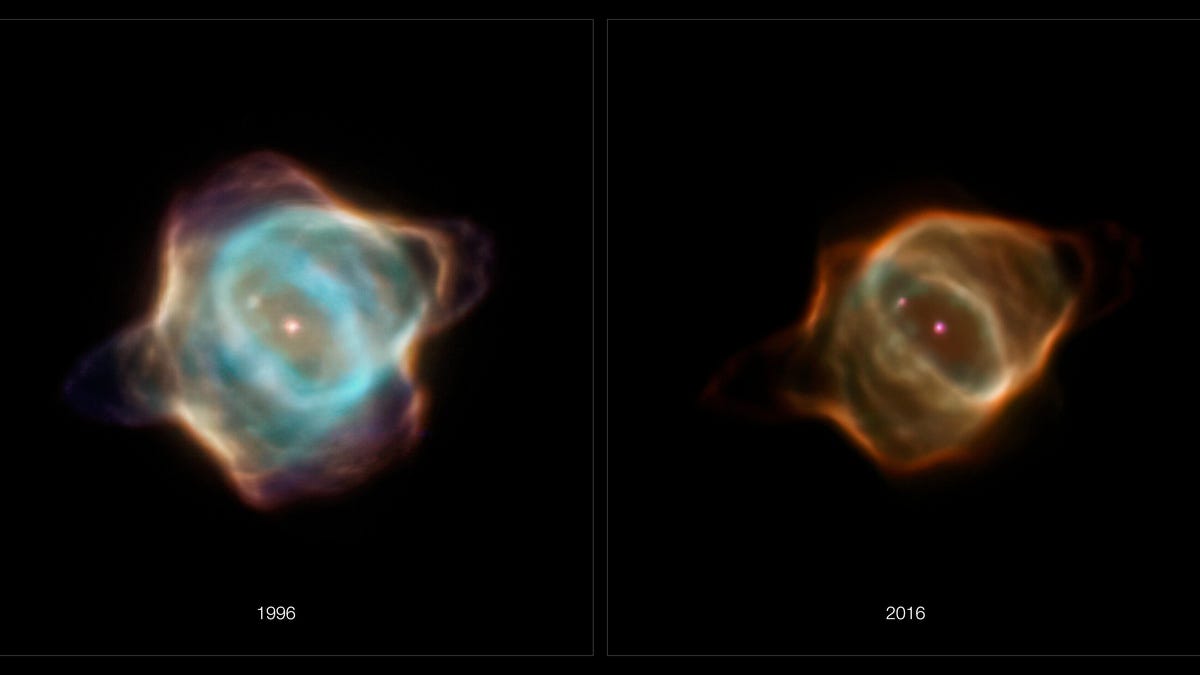Hubble telescope witnesses 'very weird' fast fade of Stingray nebula
NASA and ESA's space telescope caught sight of a nebula going through unprecedented changes.
In a universe where processes are often measured in millions and billions of years, the Hubble Space Telescope witnessed something extraordinary over the course of just two decades. The Stringray nebula went from bright in 1996 to faded in 2016, as if it had been left hanging on a cosmic drying line.
Stingray, more formally known as Hen 3-1357, was hailed as the youngest known planetary nebula when it was first noticed. The nebula formed during the star's end of life when it ejected glowing gases that gave it a marine-animal-like shape.
What's so wild about the nebula is the radical makeover it has gone through in such a short amount of time. "Changes like this have never been captured at this clarity before," NASA said in a statement on Thursday, calling it "a rare look at a rapidly fading shroud of gas around an aging star."
NASA and the European Space Agency (ESA) jointly operate Hubble. Astronomers are taking notice of what both agencies described as "unprecedented" changes. The nebula had been emitting lots of nitrogen (red), hydrogen (blue) and oxygen (green), which gave it its distinct shape and glow in the original image.
"This is very, very dramatic, and very weird," said Hubble team member Martín Guerrero of the Instituto de Astrofísica de Andalucía in Spain. "What we're witnessing is a nebula's evolution in real time."
The culprit is likely the central star inside the nebula, which experienced a rapid rise in heat followed by a cooling phase. It seems Hubble got lucky with taking the images when it captured a before-and-after view of the nebula's wild swing. At this rate, NASA estimates it may be barely detectable within just a few decades.
NASA's Hubble Twitter account hopped on the "How it started/How it's going" meme with the before and after images of the nebula.
How it started / How it's going pic.twitter.com/084qoxvLNl
— Hubble (@NASAHubble) December 3, 2020
Despite being in orbit for an impressive 30 years, Hubble continues to feed us incredible cosmic discoveries, from soul-wrenching views of the distant universe to gorgeous portraits of Jupiter.


